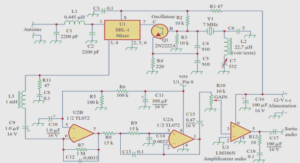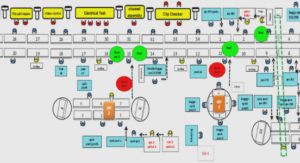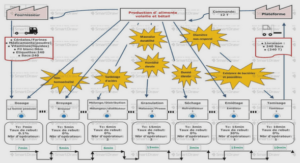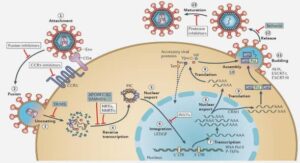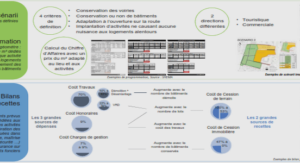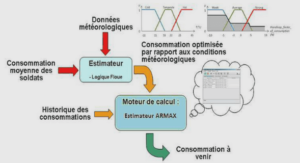The development of wind energy
However, huge progress must be made on this class of wind turbines, especially on their control. This is the main reason of this thesis. This chapter introduces the wind turbines, including the traditional onshore wind turbines, offshore wind turbines, especially the floating ones. The chapter also displays the wind turbines control systems and proposes a review of controllers. Finally, the research motivations and organizations of this thesis are outlined. Wind turbine is the product of modern science and technology. It is a power generation equipment that uses natural wind energy to firstly convert the kinetic energy of wind into mechanical energy. Then, the turbine driving the generator, power generation is possible. As a kind of clean, renewable and sustainable energy, wind energy plays an important role for the global power supply system and becomes the fastest increasing new clean electric power. In 2019, new installed capacity exceeded the 60 GW milestone for the second time in history, that is +19% compared with 2018 (see Figure 1). Table 1 is listing the top 5 countries of installed wind power capacity by 2019. Although the majority of the wind turbines are installed onshore, the offshore wind market is grow- ing rapidly (about 30% per year) since 2010 thanks to the development of technology. For example, in 2019, 6.1 GW (a record) of offshore wind energy has been installed (see Figure 1). The fast development of offshore wind energy is due to the fact that (H. Namik and K. Stol 2013; Olondriz Erdozain 2019):
In the next five years, about 150 new offshore wind projects are expected to be completed all over the world, pointing to an increasing role for offshore wind in power supplies. Many european countries stimulate the development of this technology, among them United Kingdom, Germany and Denmark. The United Kingdom and Germany currently have the largest offshore wind capacities in operation, while Denmark produces 15% of its electricity from offshore wind in 2018. China added more capacity than any other country in 2018 (IEA 2019b). The concept of floating wind turbine (FWT) was firstly proposed in (Heronemus 1972): this concept allows to generate electricity in the deep water zones thanks to floating structures that supports the wind turbines. However, since the establishment of commercial wind power industry in the mid 1990’s, the topic of FWT has gradually got attention from the research community (Musial, But- terfield, and Boone 2004). Based on the floating technologies derived from oil & gas industry, FWT could imagine using the abundant oceanic wind energy resources.Current contributions of floating wind systems versus all the wind installations is fairly small, but it will play an increasingly important role toward the end of this decade, accounting for 6 percent of global new wind installations in 2030 (GWEC 2020). Europe has the most developed FWT tech- nologies and has a great potential for the floating wind market (WindEurope 2017). Furthermore, european companies lead three quarters of the floating wind projects, with more than fifty FWT projects all over the world. Numerous of pre-commercial FWT projects (see Table 2) are now an- nounced and will be in operation in the next few years.
There are four main floating structures currently applied to the FWT systems (Wind Energy In- ternational 2020): barge, semi-submersible (semi-sub), spar-buoy (spar) and tension leg platform (TLP) as shown in Figure 2. They are classified by the principles of stabilization mechanisms in the water; a brief introduction of the four platforms is given in the sequel (Si 2015; Hazim Namik 2012; Olondriz Erdozain 2019; Scheu et al. 2018) • Barge structure: the barge platform is stabilized mainly by a water-plane area, that is a mechanical structure similar to a ship. Such platform usually has a large area with a shal- low draft that gives the minimum water depth requirement. Mooring lines are necessary to maintain the platform at a given spot and prevent the drift displacement. Moreover, moon pool or heave plates can equipped the barge platform in order to increase the damping and reduce the platform motions (Scheu et al. 2018); • Semi-submersible (semi-sub) structure: the semi-sub platform is stabilized by the com- bination of ballast and water-plane area. The ballast diameters, their distances from each other, the draft and the mass of the structure, affect the stability of the platform. Therefore, the motions of the platform can be adjusted by those parameters. Mooring system is also required to keep the platform at a given position;

